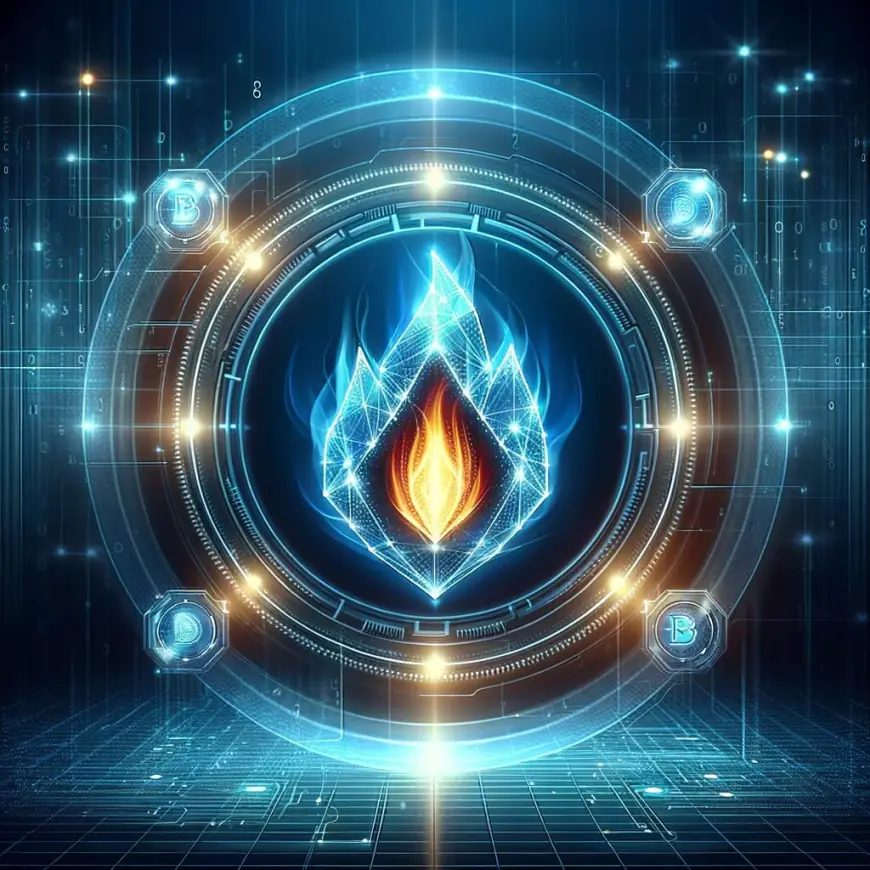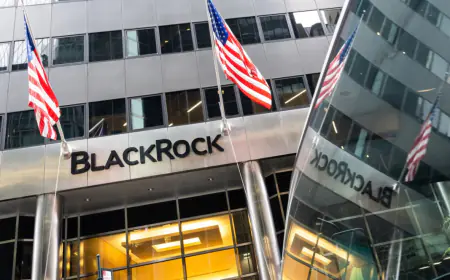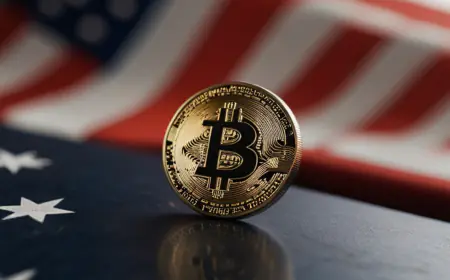Why Is Proof-of-Burn Consensus A Strategic Mechanism?
Proof of Burn (PoB) emerges as a unique consensus mechanism in the blockchain realm, fundamentally distinct from its predecessors. At its core, PoB operates on the principle of willingly rendering a portion of cryptocurrency permanently inaccessible, or “burned.” This act of burning is not a physical destruction but a strategic move to send coins to […]

Proof of Burn (PoB) emerges as a unique consensus mechanism in the blockchain realm, fundamentally distinct from its predecessors. At its core, PoB operates on the principle of willingly rendering a portion of cryptocurrency permanently inaccessible, or “burned.” This act of burning is not a physical destruction but a strategic move to send coins to an address from which they can never be retrieved. The rationale behind the Proof-of-Burn mechanism is to simulate the mining process without the extensive resource usage characteristic of traditional mining methods.
How did PoB come to life?
The inception of PoB is a response to the growing concerns around the environmental impact and resource intensity of Proof of Work (PoW) systems. As blockchain technology evolved, the need for more sustainable and efficient consensus methods became apparent. PoB was conceptualized as an innovative solution, aiming to mitigate the high energy demands of PoW while addressing some of the centralization issues seen in Proof of Stake (PoS) systems.
How PoB Works?
In PoB, participants, often referred to as miners, burn their own tokens to acquire mining rights. This burning is akin to investing in mining equipment in PoW, but instead of purchasing physical hardware, miners are essentially investing in the network itself. The more a participant burns, the higher their chances of being chosen to mine the next block. This method not only ensures commitment to the network but also facilitates a fairer distribution of mining opportunities.
Proof of Burn (PoB) vs. Proof of Work (PoW)
While PoW requires significant computational power and energy to solve complex mathematical problems, PoB stands out with its minimal resource usage. In PoW, the probability of mining a block is proportional to the computational power a miner can wield, often leading to energy-intensive mining setups. PoB, conversely, replaces this physical resource expenditure with the conceptual expenditure of coins, marking a shift towards a more energy-efficient consensus model.
Proof of Burn (PoB) vs. Proof of Stake (PoS)
Comparing PoB with PoS reveals another layer of distinction. In PoS, validators stake their coins as collateral to validate transactions and create new blocks. This staking process, while less resource-intensive than PoW, often leads to concerns about wealth concentration and network control. PoB, on the other hand, requires the permanent burning of coins, creating a more definitive commitment to the network’s longevity and stability. Unlike PoS, where staked coins can eventually re-enter circulation, burned coins in PoB are permanently removed, introducing a deflationary aspect to the network’s tokenomics.
Overall, Proof of Burn stands as a testament to the evolving landscape of blockchain technology, offering a unique blend of security, efficiency, and commitment. Its consensus approach not only addresses some of the critical issues faced by earlier mechanisms but also paves the way for more sustainable and equitable blockchain networks.
Technical Aspects of Proof-of-Burn
The Role of Eater Addresses
Eater addresses form the cornerstone of the Proof-of-Burn (PoB) mechanism. These unique addresses are integral to the burning process, serving as the final destination for coins that are to be rendered unusable. Unlike regular cryptocurrency addresses, eater addresses are designed without corresponding private keys, making it impossible to retrieve or spend the coins once they are sent there. This irreversible process ensures the permanence of the burn, a critical feature that underpins the trust and integrity of the PoB system.
Mechanism of Coin Burning
Coin burning in PoB is a deliberate action where participants send their coins to an eater address. This action is akin to a miner purchasing equipment in traditional mining but in a virtual sense. The transaction, once executed, is irrevocable and publicly recorded on the blockchain, serving as immutable evidence of the burn. This transparency is crucial, as it allows the network to verify the burn and grant the burner corresponding mining rights or rewards.
Virtual Mining and Burnt Coins as Mining Rigs
In PoB, the concept of virtual mining comes to the fore. Here, the burnt coins are metaphorically viewed as investments in virtual mining rigs. The more coins a participant burns, the greater their mining power in the network. This virtual mining rig concept is a pivotal shift from the physical resource-intensive mining in PoW, offering a more sustainable and accessible form of participation in the blockchain network. It democratizes the mining process, allowing anyone to participate without the need for expensive hardware.
Algorithm Implementation Variations
The implementation of PoB can vary significantly across different blockchain projects. Some networks opt for burning their native tokens, while others allow the burning of external cryptocurrencies, like Bitcoin, to participate in their network. These variations cater to different network goals and tokenomics. For instance, burning native tokens can help control inflation within the network, while burning external tokens can facilitate cross-chain interactions and broaden the network’s reach. Each implementation carries its unique set of incentives and consequences, shaping the network’s dynamics and participant behavior.
The technical aspects of Proof-of-Burn reflect a sophisticated blend of cryptographic security, economic strategy, and innovative blockchain engineering. This mechanism not only fortifies network security but also aligns participant incentives with the long-term health and sustainability of the blockchain.
Advantages of Proof-of-Burn
Energy Efficiency and Sustainability
Proof-of-Burn (PoB) emerges as a beacon of energy efficiency in the blockchain landscape. By eliminating the need for energy-intensive mining operations characteristic of Proof of Work (PoW) systems, PoB significantly reduces the environmental footprint of blockchain networks. This efficiency is achieved as PoB replaces the physical computational work with the virtual act of burning coins. Such a shift not only conserves energy but also paves the way for more sustainable blockchain operations, aligning with global efforts to reduce energy consumption and environmental impact.
Decentralization and Security
PoB contributes to enhanced decentralization and security within blockchain networks. By allowing participants to burn coins as a means to gain mining rights, PoB lowers the barriers to entry that are often seen in PoW systems, where expensive hardware and high energy costs can centralize mining power in the hands of a few. In PoB, the ability to participate is not contingent on substantial physical resources, fostering a more distributed and inclusive network of validators. This decentralization is crucial for enhancing network security, as it reduces the risk of central points of failure and makes the network more resilient to attacks.
Long-term Commitment and Incentives
The mechanism of PoB inherently encourages long-term commitment from its participants. When miners burn coins, they make a tangible investment into the network, signaling their confidence and long-term interest in the blockchain’s success. This commitment is further incentivized by the potential rewards that come from participating in the mining process. Such a system aligns the interests of the miners with the health and longevity of the blockchain, creating a community of participants who are invested not just financially but also in the future of the network.
Market Scarcity and Coin Value
An often-overlooked advantage of PoB is its impact on market scarcity and coin value. The act of burning coins permanently reduces the available supply, introducing a deflationary element to the network’s economy. This reduction in supply can lead to an increase in the value of the remaining coins, assuming demand remains constant or increases. For investors and users of the cryptocurrency, this can be an attractive feature, as it suggests a potential for appreciation in coin value over time. Moreover, this market scarcity can also contribute to the stability of the coin, making it a more attractive option for both long-term investment and everyday transactions.
Disadvantages and Criticisms of PoB
Resource Wastage Concerns
Despite its energy efficiency, Proof-of-Burn (PoB) is not without its detractors, particularly regarding resource wastage. Critics argue that burning coins, especially those with inherent value, equates to deliberate destruction of resources. This act of making coins permanently inaccessible is seen as a wasteful expenditure, especially in economic terms. The concern intensifies when high-value or widely-used cryptocurrencies are burned, raising questions about the rational utilization of digital assets.
Scalability and Efficiency Issues
Scalability remains a challenging aspect for PoB. As the network grows, the demand for coin burning increases, potentially leading to an escalated rate of resource depletion. This raises questions about the long-term sustainability of PoB, especially in comparison to other consensus mechanisms that do not require such resource elimination. Additionally, the efficiency of PoB in processing transactions at scale is a subject of ongoing scrutiny. As the network expands, maintaining efficiency while ensuring fair participation becomes a complex balancing act.
Potential for Centralization
Contrary to its aim of promoting decentralization, PoB can inadvertently pave the way for centralization. This occurs when entities with substantial resources burn significant amounts of coins, thereby gaining disproportionate control over the mining process. Such centralization is a concern as it can lead to a concentration of network power in the hands of a few, undermining the democratic ethos of blockchain technology. This centralization not only poses security risks but also contradicts the principle of equal opportunity that blockchain networks strive to uphold.
The Rich Get Richer Problem
PoB is not immune to the ‘rich get richer’ phenomenon, a criticism often directed at various blockchain consensus mechanisms. In PoB, participants with more resources to burn can potentially dominate the mining process. This dominance allows them to reap more rewards, further increasing their capacity to burn coins and maintain their influence over the network. This cycle can create an uneven playing field, where wealthier participants become increasingly powerful, while smaller players find it challenging to compete. Such a dynamic can lead to a skewed distribution of rewards and control, detracting from the equitable nature of blockchain networks.
Practical Applications and Examples
The Proof-of-Burn (PoB) mechanism, while not as widespread as other consensus models, has been adopted by several cryptocurrencies, each illustrating unique applications of this concept. Slimcoin stands out as a notable example, utilizing PoB in a way that allows miners to burn coins for the right to mine blocks over an extended period. This implementation showcases PoB’s flexibility in adapting to different blockchain needs. Another example is Counterparty, a platform that uses PoB for the creation of its tokens. In this case, Bitcoin is burned to receive Counterparty tokens, demonstrating PoB’s potential in facilitating cross-chain interactions and token generation.
The real-world implementations of PoB extend beyond mere token creation. For instance, some blockchain projects use PoB for network security purposes. By burning coins, participants in these networks contribute to the overall security and stability of the platform, ensuring a more robust and resilient blockchain infrastructure. Additionally, PoB has been explored as a tool for creating deflationary token models, where the deliberate reduction in token supply through burning can potentially lead to increased token value, benefiting long-term holders and contributing to the economic stability of the cryptocurrency.
Conclusion
Characterized by its unique approach of burning coins to validate transactions and create new blocks, PoB stands apart for its energy efficiency and sustainability, a stark contrast to the resource-intensive Proof of Work (PoW) model. While it enhances network decentralization and security, PoB also introduces a deflationary aspect to the cryptocurrency economy by permanently reducing the coin supply. However, it faces critiques regarding resource wastage, potential scalability issues, risks of centralization, and the amplification of wealth disparities.
Looking ahead, PoB’s role in the future of blockchain is poised to be significant yet nuanced. As the blockchain sector continues to evolve, the demand for sustainable and efficient consensus mechanisms is likely to grow. PoB, with its lower energy requirements and potential for fostering long-term commitment among participants, could see increased adoption, especially in networks where environmental impact and equitable access are priorities.
What's Your Reaction?







































































































